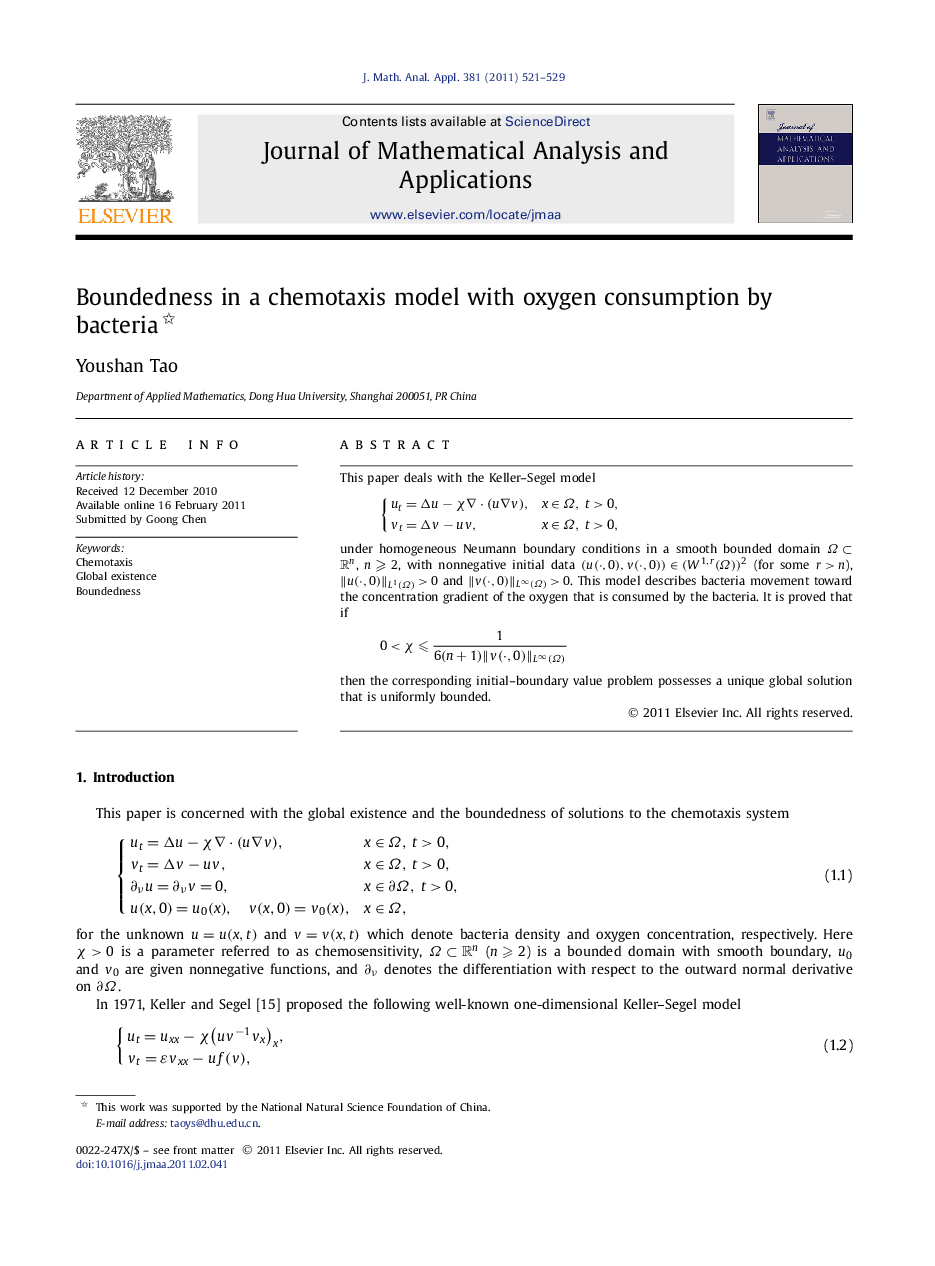| Article ID | Journal | Published Year | Pages | File Type |
|---|---|---|---|---|
| 4618080 | Journal of Mathematical Analysis and Applications | 2011 | 9 Pages |
Abstract
This paper deals with the Keller–Segel model{ut=Δu−χ∇⋅(u∇v),x∈Ω,t>0,vt=Δv−uv,x∈Ω,t>0, under homogeneous Neumann boundary conditions in a smooth bounded domain Ω⊂RnΩ⊂Rn, n⩾2n⩾2, with nonnegative initial data (u(⋅,0),v(⋅,0))∈(W1,r(Ω))2(u(⋅,0),v(⋅,0))∈(W1,r(Ω))2 (for some r>nr>n), ‖u(⋅,0)‖L1(Ω)>0‖u(⋅,0)‖L1(Ω)>0 and ‖v(⋅,0)‖L∞(Ω)>0‖v(⋅,0)‖L∞(Ω)>0. This model describes bacteria movement toward the concentration gradient of the oxygen that is consumed by the bacteria. It is proved that if0<χ⩽16(n+1)‖v(⋅,0)‖L∞(Ω) then the corresponding initial–boundary value problem possesses a unique global solution that is uniformly bounded.
Related Topics
Physical Sciences and Engineering
Mathematics
Analysis
Authors
Youshan Tao,
